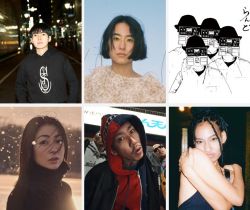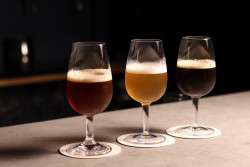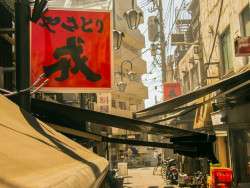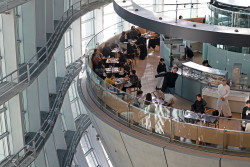
Originally published on metropolis.co.jp on March 2010
The French like to say that Benedictine monk Dom Pérignon invented Champagne, but he didn’t really. Though the chap contributed much to the méthode Champenoise, he also spent his days trying to ferment wines without producing those pesky little pockets of carbon dioxide. It was only when the British nobles decided that they quite liked the way it tingled that a market for bubbly began. That great drink of champions and nuptials began life as faulty French plonk.
Gin enjoyed a similar surge in reputation. In 18th century England, the working classes were drinking themselves to death on the juniper spirit; by the mid-20th century it was the base of Bond’s favorite cocktail.
Shochu began as southern Japanese gutrot before the makers learned to distill (and market) better. Premium tequila was an oxymoron until early this century. And last year, Suntory sold Japan on whisky and sodas via their phenomenally successful highball campaign.
What’s next for a makeover? Makgeolli, apparently. In January, Tokyo Walker magazine declared Korea’s rice wine the next big drink, saying that, like the highball, it’s cheap, relatively healthy, and proving popular with young women.
They’re right on all counts. Makgeolli sells for less than ¥500 a liter in Japan, is low in alcohol (5-7 percent), and its yogurty sourness comes from lactic acid, left over from fermentation, which science suggests can boost the immune system, lower cholesterol and reduce blood pressure. According to South Korean tax office figures, the drink is already a hit in Japan, with a whopping 89.6 percent of exported makgeolli heading here in 2008.
But the brew has an image problem. In its native land it’s also known by the nicknames nongju, wheju, cheju or takju, all of which connote hillbilly booze, and despite a history at least eight centuries long, it’s still usually sold in white plastic bottles at rock-bottom prices. While Japan’s rice brew became the drink of Shinto gods and emperors, its unfiltered Korean cousin has never been anything but hooch.
“Makgeolli? That’s a grannies’ drink,” said 24-year-old South Korean native Su Hyun Kang when I asked her to guide me on a makgeolli tour of Okubo, Tokyo’s Koreatown.
“It’s the next big thing,” I said, and promised to feed her with kimchi and pancakes.
We both turned up with the same destination in mind: Makkoli, a tiny bar that specializes in makgeolli, or makkoli as they spell it.
Makkoli, the establishment, has a white façade, white logo, white walls, white cushioned bar stools and white drinks. To prevent you from getting snow blindness, they’ve turned the glass counter into a giant disco light, whirling purple, green, yellow, pink, orange and blue, and they blast Korean pop from a small screen on the wall. If this were a gay bar in the ’80s, I imagine it would fare well.
One of the drink shelves supports all the usual bar staples. The other has the makgeolli, lined up in white plastic bottles like the yogurt rack in a convenience store.
Yogurt is actually a pretty good reference point for the gloopy, white makgeolli. Unlike sake, the Korean brew is served unfiltered and loaded with lactic acid.
I asked the bartender for his two most diverse drinks, and he gave us a fresh makgeolli and a Kirin no Hana (the brands all have Japanese names, both on the menu and on the bottle—a sign of breweries being quick to target this eager new market). Both arrived on ice in old-fashioned glasses.
As drink spectrums go, it wasn’t up there with wine or whisky, but it showed that makgeolli should be judged on its fizziness and tartness. Like old Perignon’s plonk, the sparkling stuff is the best.
Makkoli also serves fruity makgeolli cocktails, using syrup or fresh fruit. The syrup version turned up unmixed, and apparently unmixable: no matter how fast I stirred, the colored goop settled under the makgeolli. I ordered a jug of fresh blueberry makgeolli and the bartender darted out the door, returning about five minutes later with a purple slurpee. There may have been makgeolli in it, but I couldn’t tell.
“They say that if you drink makgeolli in the daytime, you won’t recognize your own parents by night,” said Kang. You will if you drink it with crushed ice and juice. And that’s probably the point of this bar: the customers are predominantly young Japanese women, and a mild, fruity drink is just what they want.
Not me, though, so Kang and I headed across the street to Pocha, where they serve makgeolli the traditional way, pouring from kettles into shallow, flat-bottomed drinking bowls. Kang explained that it harks back to the olden days in Korea, when people took empty kettles to the village store to fill with homemade makgeolli.
My guide taught me that it’s polite to pour for each other, with one hand holding the kettle, and the other supporting the pouring wrist. Drinkers must then turn away from their elders as they sip. Luckily, I’m Kang’s elder.
The makgeolli at Pocha comes in half a dozen flavors, including pumpkin, black bean, chestnut and okoge (the crusty rice at the bottom of your rice cooker). The black bean version looked like something that would ooze from a drain, but it’s the only one that I would go back to drink.
According to a story in the Asahi Shimbun in January, makgeolli’s surging popularity in Japan has prompted Korea to take another look at its native drink, and it’s no longer just bumpkins that are imbibing. After our trip to Okubo, Kang spent some time in her homeland. “There seemed to be more interest in makgeolli now,” she reported back. “There were a lot of new makgeolli bars aimed at a young, hip crowd. We went to one and had to queue to get in.”
Is makgeolli about to emulate the rise of gin and champagne? Probably not, but it’s doing pretty well for hillbilly hooch.
Makkoli: 1-5-24 Hyakunincho, Shinjuku-ku. Tel: 03-6380-3487
Pocha: 1-2-3 Hyakunincho, Shinjuku-ku. Tel: 03-5285-8191










